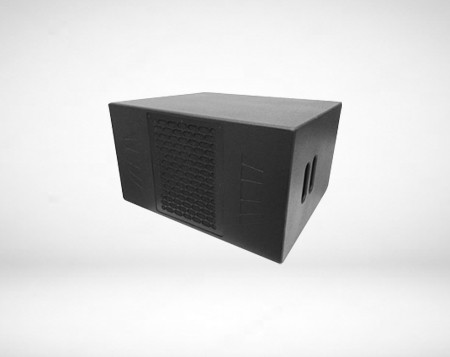source:Industry News release time:2022-09-07 Hits: Popular:Brand bar audio wholesale

There are many ways to connect the feedback suppressor in the conference audio system. Now I will list the connection methods for you.
1. It is connected in series in the audio system like an equalizer and other peripheral devices. The advantage of this connection is that the connection and operation are simple, and it is suitable for relatively simple systems. But the disadvantage is: this connection method also affects other audio source signals passing through the feedback suppressor when suppressing the feedback of the microphone; for example, if we connect a feedback suppressor in series to the main channel output of the mixer, then this The feedback suppressor can only suppress the acoustic feedback of this signal channel, and has no effect on other channels such as AUX output, group output, etc.
2. Use the INS insert/insert interface in the mixer group to connect the feedback suppressor in series to the corresponding group channel. The advantage of this connection is that the microphones programmed into the group can be processed centrally without affecting the to other audio sources. The disadvantage is that it is easy to cause misoperation. For example, the 1-8 channels of a mixer are all microphones. We program these 8-channel microphones into the 1-2 groups of the mixer for centralized processing, but if the 1-8 channels of microphones are in the Any way of the 3-4 group is accidentally reprogrammed. If there is no feedback suppressor in the 3-4 group, then acoustic feedback may also be generated at this time. Therefore, it is necessary to understand the mixer well, operate it carefully, and then use this method. All in all, because this method can make full use of the feedback suppressor, it is also the most used connection method at present.
Connection method of feedback suppressor in conference audio system
3. Use the INS insertion/insertion interface in the mixer channel to connect the feedback suppressor in series with the corresponding channel. The advantage of this connection is that the feedback suppressor can be adjusted to the maximum extent, so that the conference sound does not need to be considered. affect other audio sources. The disadvantage is: using this connection method, a feedback suppressor can control up to 2 channels of the mixer, and the equipment cannot be fully utilized.
Connection method of feedback suppressor in conference audio system
4. Another method in the process of conference audio installation is to use two mixers, one is specially connected to the microphone, and the volume is input to the other mixer after processing by the feedback suppressor. The advantages of this are: centralized control of the microphone to the greatest extent, and completely avoid interference with other audio sources; the disadvantage is: the microphone is usually a small mixer, and its quality is generally not as good as a large one. , and the functions are not rich enough, so the processing quality may not be ideal; there are two mixers that are a bit cumbersome to operate, and unskilled sound engineers are often confused.
Connection method of feedback suppressor in conference audio system
5. If there is no INS insertion/insertion interface in the grouping channels of some mixers, and we do not want to connect the feedback suppressor in series to the main output channel, and want to centrally control the microphone, then we can use a It doesn't seem to be standardized and there is no method in the textbook. For example, the 1-8 channels of a mixer are all microphones. We can send the volume of these 8-channel microphones to the feedback suppressor through the corresponding AUX. If it is AUX5- 6 channels. After processing through the feedback suppressor, it will flow back to the corresponding channel of the mixer, if it is channel 23-24. In this way, the connection method is similar to that of connecting an effector. Both require AUX to be set to be sent after the fader, and also require that AUX5-6 in channels 23-24 cannot be turned on, otherwise a signal loop will occur; but the difference is that at this time The volume of channels 1-8 cannot be programmed into any group or main channel, that is, L-R of the main channel, 1-2, 3-4, 5-6... The volume of the 8 channels is purely sent out through the AUX5-6, and then mixed into the mixer through the 23-24 channels, and finally the mixer is output through the corresponding signal channel. This also works well, it just feels a bit deviant, but my point of view has always been the emphasis: flexibility and practicality.
Popular recommendation
F218 Mk2 Learning audio Vendor
2021-07-14C15 Bar sound bar wholesale
2021-07-26XD18I Bar speakers wholesale
2021-07-26AX 8 KTV audio price
2021-07-17XD18C Big sound bar Merchant
2021-07-26Resolution 4D Downfill KTV audio Factory
2021-07-17XQ42 Bar speaker wholesaler
2021-07-26Resolution 4E Bar speakers Factory
2021-07-16PSM 12 POINT SOURCE MONITOR Speaker bar company
2021-07-16D80/D100/D120 KTV brand audio Vendor
2021-07-26F124 Home ktv audio Vendor
2021-07-14F118 MK2 Brand bar audio sales
2021-07-14Equalizer malfunctioning in pro audio.Lanzhou Conference Room Audio
2022-06-09Sound characteristics of countries all over the world.Changde Bar Speaker Vendor
2021-12-02Wuxi HYPER OG bar audio recommendation--Mateng Audio
2022-10-12Xichang GT ROOM Audio Equipment for Popular Party Bars---Mateng Audio
2022-08-15What elements do audio equipment need?
2022-05-14Precautions for audio use
2022-03-19How to tune KTV to make singing "not tired"?Audio brand bar
2022-04-16Wuxi HYPER OG bar sound engineering is provided by Maarten Sound
2022-09-09Details that need to be paid attention to in the adjustment and setting of professional audio equipm
2022-05-10Do you know how the subwoofer speakers should be configured?
2022-07-16Dongguan PARTY MASTER bar sound is provided by Ma Teng sound
2022-01-19Tongxiang SPACE Party Bar Special Audio----Mateng Audio
2022-06-30